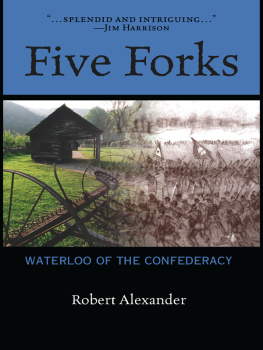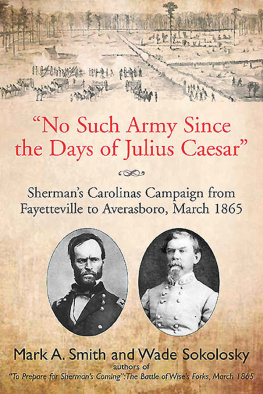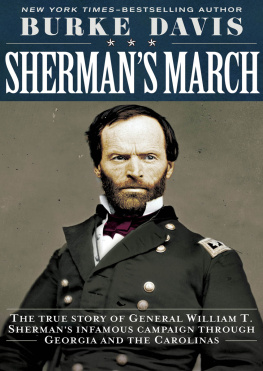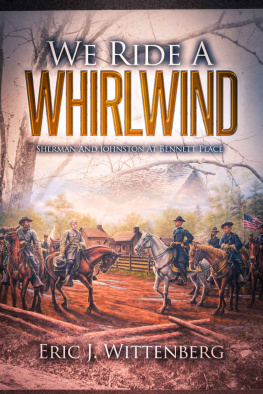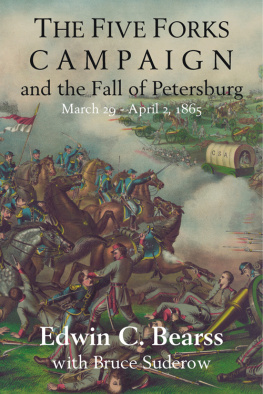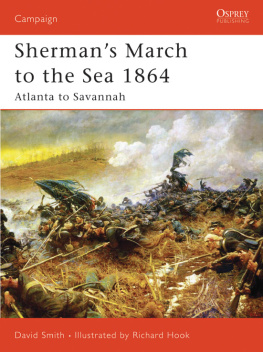2015 by Wade Sokolosky and Mark A. Smith
All rights reserved. No part of this publication may be reproduced, stored in a retrieval system, or transmitted, in any form or by any means, electronic, mechanical, photocopying, recording, or otherwise, without the prior written permission of the publisher.
Library of Congress Control Number: 2015946034
ISBN: 978-1-61121-266-2
First edition, first printing
e-book ISBN: 978-1-61121-267-9

Published by
Savas Beatie LLC
989 Governor Drive, Suite 102
El Dorado Hills, CA 95762
916-941-6896
www.savasbeatie.com
Savas Beatie titles are available at special discounts for bulk purchases in the United States by corporations, institutions, and other organizations. For more details, please contact Special Sales, P.O. Box 4527, El Dorado Hills, CA 95762, or you may e-mail us at for additional information.
Proudly published, printed, and warehoused in the United States of America.
Dedicated to
the American Soldier

Table of Contents
Appendix A:
The Opposing Forces in the Battle of Wises Forks, North Carolina
Appendix B:
Confederate Strength at the Battle of Wises Forks
Appendix C:
Documented Confederate Battle Losses
Appendix D:
The Return of Capt. Julius Bassetts Sword
Appendix E:
Journey to Point Lookout, Maryland
List of Maps
List of Illustrations
Preface
S ergeant William Trousdale of the 48th Tennessee was killed on the final day of the battle of Wises Forks. Trousdale and scores of other Confederates were buried in unmarked graves, where they remain to this day.
Like Trousdale and his fallen comrades, the battle itself has been largely forgotten for more than 150 years. Despite its significance within the larger context of the Carolinas campaign, Wises Forks has received only a fraction of the attention paid to battles fought at Bentonville, Monroes Crossroads, and Averasboro. John G. Barretts The Civil War in North Carolina (1963) and Mark L. Bradleys Last Stand in the Carolinas: The Battle of Bentonville (1996) offer excellent basic narratives of the battle, but their coverage was deliberately limited.
In the last decade, two published worksTom J. Edwards and William H. Rowlands Through the Eyes of Soldiers: The Battle of Wyse Fork (2006), and Timothy Autens The Battle of Wyse Fork: North Carolinas Neglected Battle (2008) advanced the battles scholarship. Both deserve praise for providing insight on this previously neglected chapter in North Carolinas Civil War history.
To Prepare for Shermans Coming builds upon the excellent work done by earlier authors by using more sources and add a different perspective. It is important to understand the battle in the context of the Unions campaign-level objectivesa strategy implemented by Lt. Gen. Ulysses S. Grant in support of Maj. Gen. William T. Shermans march through the Carolinas during the winter and spring of 1865. The engagement at Wises Forks came about because the Federals needed a functioning railroad inland from the coast, as opposed to a desire on their part to defeat the Confederates in battle.
Acknowledgments
This study has benefited from the help and advice of many people. We are grateful to former Bentonville site manager John Goode for handing over his research files, which became our jumping-off point. We are particularly indebted to Mark L. Bradley for taking time to read the manuscript. Marks guidance, professionalism, and mentorship (and most of all his friendship) helped us tell this story. Marks tireless efforts and inspiration have made this study a better product, and words cannot describe our deepest appreciation.
We also extend our thanks to Eric Wittenberg for finding time in his busy schedule to read the manuscript. Eric is a true friend and mentor, and served as a motivator to keep us on task. His encouragement and insightful discussions over the years are greatly treasured.
Our gratitude extends to Donny Taylor, manager of the Bentonville Battlefield State Historic Site. Aside from reading the manuscript, Donny on several occasions took time out of his busy schedule to walk the battlefield with us. Donny grew up on the Wises Forks battlefield and has studied the engagement for decades.
Special thanks to Dr. Charles Classen and Bill Ellis of Kinston, North Carolina, for granting permission to use Stephen McCalls painting titled Kirklands Brigade at Wyse Fork, March 10, 1865 as our cover art. We are equally grateful to Lyle Holland of Kinston for his assistance in securing permission, and for always being available to answer questions. Thanks also to Dennis Harper of Kinston for sharing his extensive knowledge of the battlefield.
Skip Riddle assisted us greatly in casting a new light on the sacrifices and contributions of the 9th New Jersey. Skips personal research proved invaluable. If he did not have the answers, he wasted little time in reaching out to his network of fellow historians. For this Skip, we are forever grateful.
We are indebted to Heidi Crabtree for sharing her years of research on Capt. George W. Graham. Heidis forthcoming book, Not a Soldier, But a Scoundrel, will further our knowledge of the notorious captains service in eastern North Carolina.
We extend our thanks to the staff at many libraries and archives. To Lt. Col. (Ret.) Pat Beatty, for his assistance in tracking down potential sources at Fort Leavenworth; to Victor T. Jones of the New Bern-Craven County Library in New Bern, North Carolina; to volunteers and staff at the History Place, Carteret Countys Historical Society and Research Library in Morehead City; to Rebecca Elbert of the Winchester-Frederick County Historical Society; to Megan Maxwell of the Museum of the Cape Fear in Fayetteville; and to Marty Tschetter of the Wayne County Public Library in Goldsboro.
Special thanks to the many individuals who provided copies of diaries, letters, and photographs from their private collections. The contributions of the Army of Tennessee at Wises Forks would have been incomplete without assistance from researchers around the county who have specialized knowledge of particular Civil War units, including Sidney W. Bondurant and Mike Griggs of the General Barton and Stovall Brigade History & Heritage Association. Richard Melvin, R. Hugh Simmons, Larry Stephens, O. Lee Sturkey, and Bryce A. Suderow went above and beyond in providing invaluable assistance.
We owe a debt of gratitude to our friend Col. Darrell Combs (Ret.), United States Marine Corps, for his outstanding illustrations of some of the key events pertaining to Wises Forks. Darrells interest in the Carolinas campaign stems from the fact that his great-great-grandfather fought at Averasboro as a member of the 82nd Ohio and was killed several days later at Bentonville.
This project would not have been possible without the help of special individuals. Heather Ammel and Travis Seymour provided excellent editorial assistance. Bentonville staff members Amanda Brantley and Derrick Brown provided technical help.
We were especially honored when George Skoch agreed to prepare the maps. A battle study requires plentiful maps to visualize troop movements and dispositions. The maps that grace this study attest to Georges extraordinary skill and professionalism. His contribution has resulted in a far better book.
Special thanks to our publisher, Theodore P. Savas of Savas Beatie and his wonderful staff. Teds approach to publishing military history is second to none. From the outset, he placed no limitation on the number of photographs and maps, trusting instead our judgment.
Next page


